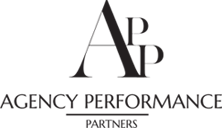How do you measure a successful insurance training program?
There are a lot of elements that one could look at to determine a successful training program. However, at the end of the day, it comes down to one word: sustainability.
There are a lot of very good insurance training programs that focus on the skills necessary to be a good producer, learn the products, or learn how to sell insurance. Most of them focus on the skills that are needed to drive the desired results. But very few focus on creating skills that are sustainable after the training starts to fade away.
There are three components to making sure that the training has a lasting effect on your staff. To do so, we need to focus on the staff, the leadership, and metrics to drive accountability.
Staff
Let’s start with the biggest obstacle. Many (not all) account managers and sales executives are resistant to change. There are a lot of employees that will quickly embrace a new process if it can make their lives easier or earn themselves more money. Having said that, many employees are so resistant to change that they’d rather stay in their comfort zone than put themselves in a position to be successful. The first step to ensure a training program’s success is getting buy-in from the staff. There are a few different ways to accomplish this. Early conversations explaining the value of the program and showing how it is going to help them be more effective, efficient, and profitable will pay dividends as the program begins. Full buy-in from managers and principals, including participation in the training will also help to convince the staff that the program is viable. Without the participation from management, the message is that the priority level on the program is low.
Leadership
Just as we need buy-in from the staff, we need buy-in from the leadership. This includes the principals as well as other executives and managers. Anyone responsible for the success of the training program should be involved in the decision-making process. While the principal should have the final decision, getting input from the manager is vital. A healthy debate behind closed doors creates a sense of responsibility for the decision. Once the decision is made, the manager needs to be on-board even if he or she has internal doubts; those doubts cannot be shared with the staff. In order for a program to be sustainable, there needs to be a built-in component of leadership development. In our AppX programs, we accomplish this by helping the managers in four main areas.
- First, we work with them on addressing the staff. From talking positively about the program to helping them work through stumbling blocks, we help the manager not only for the 6 months that we are doing the training but show him or her how to maintain this skill.
- Second, we help with metrics. To do this, we must first address what metrics we are going to focus on. Then we have to figure out whether we are utilizing our AMS, CRM, or other system to generate the number or if they are going to track manually in an excel sheet.
- Third, we have bi-weekly meetings with the staff throughout the training program. We utilize a set agenda to create a consistent environment. We review the numbers, celebrate successes and review stumbling blocks. We will work with the manager on creating an ongoing weekly or bi-weekly meeting that suits the needs of the team. Ongoing meetings will often include product and system training and discussions around renewals or other customer issues.
- Finally, the manager gets exposure on how to train the staff. One of the biggest mistakes that we make is not providing any type of management training or “train the trainer” type of training to our managers. A sustainable training program is built around the idea that once the program is over, there needs to be an improved level of leadership skills to continue to execute on the ideas.
Metrics
In order to be able to maintain improved results, tracking metrics and goals need to be implemented. It needs to be clear what is being tracked, how it is being tracked, what the expected results are, and what happens if those results are achieved or not.
Defining what to track is a fairly easy step. In our AppX training programs, we have a number of different metrics to determine the success of the program as they tie directly back to revenue. You can either do a straight count or sum (number of policies cross-sold or the revenue associated with them) or you can use ratios (successes/attempts) on anything from a sales close rate to an increase in premium rate.
Once you’ve determined what you want to track, you need to figure out how (and where) you are going to track it. Most agency management systems can help you in some ways either through activity or transaction reports, but most of them are not designed for these types of metrics. You may need to consider using a CRM, other sales tool, or even a well built excel spreadsheet to help you track. No matter what you do, you want to make sure that it is transparent so that the employee knows what they’ve done and that the results can be shared with the team.
Defining the goal and rewards or consequences of where we land in relation to those goals is the last vital step before launching a program. I typically recommend that there is some type of baseline or quota that must be met. Then having additional thresholds to reach for above that can help drive the staff. The key is making sure that there are rewards worth striving for and making sure that not achieving quota has a consequence enough to make sure that it is taken seriously.
Before moving forward with a training program, be sure that it has these three components: staff buy-in, leadership training skills, and metrics driven results. Contact ustoday to learn more about our AppX training programs focused on Sales, Retention, and Customer Experience and let us show you how our programs are sustainable by focusing on these elements.




